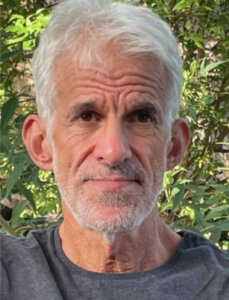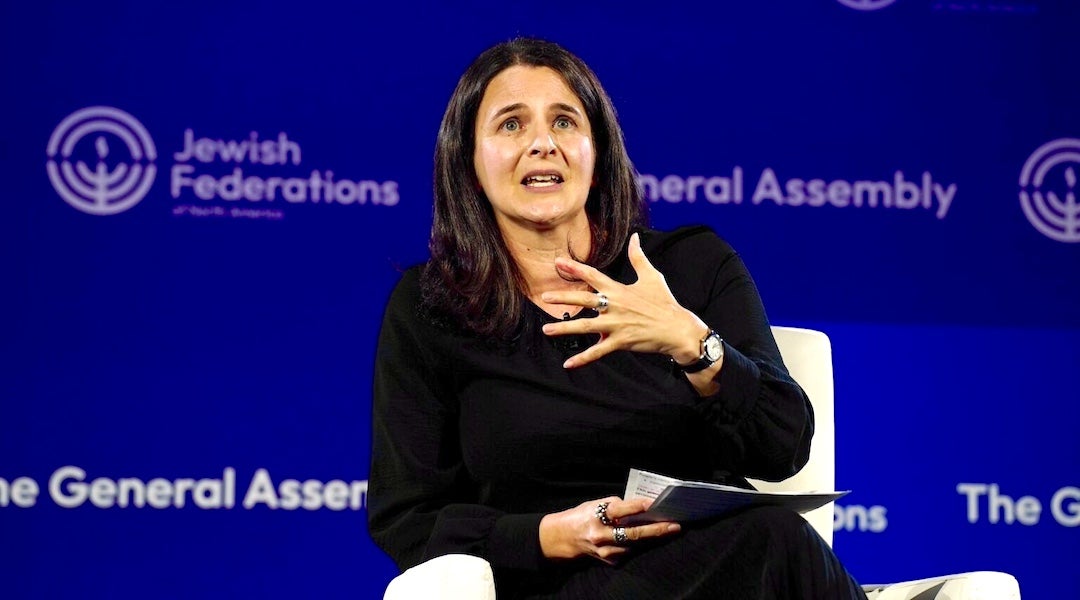Was Adolf Hitler Leader or Follower?

Image by getty images

Hell?s Henchmen: Hitler?s personality alone fails to explain how such a ?bizarre misfit? could seize power in an advanced country and do so much damage to the world. Image by getty images
Hitler: A Biography
By Ian Kershaw
W.W. Norton, 1,030 pages, $25.95
Hitler’s Hangman: The Life of Heydrich
By Robert Gerwarth
Yale University Press, 336 pages, $35
Heinrich Himmler: A Life
By Peter Longerich
Oxford University Press, 1,072 pages, $34.95
Those who can, make history; those who can’t, write history; those who can’t write history write biography.
This, at least, was once the attitude of professional historians toward biography. Biography was either too narrow (oblivious to the great sweep of political, social, economic and intellectual changes), too shallow (one cannot begin to plumb the complexities of an era through the life of one person), too presumptuous (surely no one believes that one person, no matter how powerful, can actually inflect the course of history) or too trivial (more or less the above three criticisms combined).
Read the Forward’s story about the new volume of the Holocaust encyclopedia.
But the disdain for biography among historians has itself become history. Most of us now recognize the merits of biography; more important, we also recognize the breadth of its appeal. One need only visit a Barnes & Noble to confirm biographer Paula Backscheider’s observation that the “last literary genre to be read by a very wide cross-section of people is biography.”
Samuel Johnson, the subject of the first modern biography — and no mean biographer himself — best expressed this attraction. He claimed that biography is the most useful of literary undertakings: We see our own struggles in the lives of fellow human beings. “We are all prompted,” he wrote, “by the same motives, all deceived by the same fallacies, all animated by hope, obstructed by danger, entangled by desire, and seduced by pleasure.”
Do all struggles share these ties, though? Would Johnson, in other words, have extended his remarks to Adolf Hitler, the author of “My Struggle,” better known by its original title, “Mein Kampf,” along with those whose horrifying careers he made possible?
Backscheider devotes an entire chapter to the relation between biographers and their subjects in her authoritative “Reflections on Biography.” She notes the occasional affinities between the biographer and subject, but more frequently commercial incentives and professional ambitions. As a result, biographers “write the lives of people they consider monsters or repellant human beings.” Yet, almost as if determined not to look too deeply, Backscheider quickly returns to more admirable biographical subjects. Hitler gets precisely one mention in her work.
And yet there are hundreds of Hitler biographies — enough to spawn meta-biographies, books like Ron Rosenbaum’s “Explaining Hitler,” in which the author interviews historians, as well as theologians and philosophers, who have written on Hitler. For Rosenbaum, the endless stream of works on the Nazi leader reflects a “persistent anxiety that Hitler has somehow escaped explanation.” His many interlocutors seem to agree: Historian H.R. Trevor-Roper, one of the earliest biographers of Hitler, confesses that his subject “remains a frightening mystery,” while Alan Bullock, author of “Hitler: A Study in Tyranny,” concedes: “The more I learn about Hitler, the harder I find it to explain.”
Another tough-minded Brit, the late Tony Judt, took a slightly different tack. In “Thinking the Twentieth Century,” the series of conversations he held over the course of 2009 with historian Timothy Snyder, Judt remarked that former communists often make the best commentators and historians of communism. “We have never quite lost the sense that… you cannot fully appreciate the shape of the 20th century if you did not once share its illusions, and the communist illusion in particular.” But he refused to extend this observation to Nazism: “The choice made by prominent Germans in 1933 to welcome the Nazis… is not intelligible to us today, except as an act of human cowardice.” Judt argues that this unintelligibility derives from the utter impoverishment of Nazi thought: “I simply cannot think of a single Nazi intellectual whose reasoning holds up as an interesting historical account of 20th-century thought.”
And yet, the best biographers of such figures as Hitler or Himmler must do what Milton did for hell in “Paradise Lost”: make “darkness visible.”
All three of the biographies under review — Ian Kershaw’s “Hitler” (Norton, 2008), Peter Longerich’s recent “Heinrich Himmler” (Oxford, 2012) and Robert Gerwarth’s “Hitler’s Hangman: The Life of Heydrich” (Yale University Press, 2011) — act on Milton’s imperative. After more than 2,000 pages of text, and immense scholarly effort, do they succeed? The answer is a qualified yes.
“You’ve established a wonderful thing here with Hitler…. Nobody on the faculty of any college or university in this part of the country can so much as utter the word Hitler without a nod in your direction…. He is now your Hitler, Gladney’s Hitler…. You’ve evolved an entire system around this figure, a structure with countless substructures and interrelated fields of study, a history within history. I marvel at the effort…. It’s what I want to do with Elvis.”
Murray Suskind, a character in Don DeLillo’s novel “White Noise,” thus sums up his colleague Jack Gladney’s department of Hitler studies, at College-on-the-Hill. Suskind’s observation, of course, captures how the American academy, just like our media, manages to grind everything, sinister or silly, sublime or sordid, into a vast cultural stew. Oddly, though, Suskind’s remark also captures an unsettling parallel between Jack’s own bureaucracy, made of countless substructures and interrelated fields of authority, and the Nazi state portrayed in the biographies by Kershaw, Gerwarth and Longerich.
Ian Kershaw may have trumped Gladney. In this single-volume version of an earlier two-volume set — “Hitler: 1889–1936: Hubris” and “Hitler: 1936–1945: Nemesis” — Kershaw has made Hitler his own. In his effort to whittle down the two volumes, Kershaw had to carve out more than 650 pages, along with the scholarly apparatus, from the earlier works. For scholar and nonscholar alike, the result is remarkable: In the surviving 900 or so pages, Kershaw creates a complex and compelling account of Hitler.
But the complexity results less from plumbing Hitler’s character than from casting Hitler in a nuanced reconstruction of the regime he created. Kershaw readily concedes that Hitler was an “extraordinary personality.” But personality alone simply fails to explain how “such a bizarre misfit [could] ever have been in a position to take power in Germany, a modern, complex, economically developed, culturally advanced country.” Kershaw thus turns to Max Weber’s notion of “charismatic personality”: an individual who, at a critical moment in the nation’s history, seems to reflect those qualities that promise national salvation. In other words, Hitler can no more be grasped outside the context of interwar Germany than interwar Germany can be understood without Hitler.
Viennese satirist Karl Kraus famously said about Hitler that he had nothing to say — an insight Kershaw develops at epic length. Hitler’s inner life? Kershaw argues there was no private self, but a self that flourished only in the public arena of political activity. For Kershaw, Hitler is an “unperson”: Outside of politics, Hitler’s life was “largely a void.” This would pose a problem not just for Johnson, but nearly all of us, as well: The stuff of biography, after all, is the rapport between the public and private lives of the subject. What happens, then, when a biographer concludes that his subject had no private life to speak of? When what is most striking, as Kershaw claims about Hitler, is the great gulf between his public persona and “the emptiness of what was left of an existence outside politics”?
On the one hand, this assessment is chilling: It is easier to come to grips with a monster than with a vacuum. On the other hand, it allows Kershaw to shift the traditional focus of biography. Rather than setting off on the futile pursuit of an inner Hitler, Kershaw chose to write a “history of his power,” a history that embeds Hitler in the society that allowed him to obtain and exercise his power.
Such a conception dovetails neatly with the so-called functionalist thesis: namely, the claim made by a growing number of historians that rather than an omnipotent and omniscient Führer leading the Nazi state, the Nazi state was, if not precisely leading the Führer, trying to anticipate him. This process of acting on wishes rather than following explicit commands was oiled by the regime’s dizzying flowchart of overlapping ministries, parallel bureaucracies and endlessly multiplying offices.
By the late 1930s, Kershaw asserts, the “person” Hitler was disappearing “more and more into the role of the almighty and omniscient Leader,” largely confining his role — with the exception of military strategy — to pronouncements and prophecies. The sprawl of agencies that had sprouted under his aegis then competed with one another to divine and act on these utterances. In the phrase Kershaw plucks from a speech given by a Nazi functionary, they sought to “work towards the Führer.”
The effects were no less horrific than if Hitler had actually micromanaged the Nazi state. This holds true, Kershaw argues, even (perhaps especially) for the implementation of the Final Solution. Kershaw takes great pains to recreate Hitler’s youthful experiences as a soldier in World War I and as a bohemian in postwar Vienna, and his immersion in the city’s cesspool of anti-Semitism. “Mein Kampf,” written in prison in 1924, reflects the summa of Hitler’s racialist worldview, imbued with the conviction that “Aryans” and “Semites” were engaged in a life-or-death struggle. He had nothing more to add, or subtract, from this worldview until the very end, when he attributed his defeat to a global Jewish conspiracy, then blew his brains out in the Berlin bunker.
In this respect, Kershaw’s portrait of Hitler is familiar. But it is the way he frames the portrait that causes consternation in some quarters. On the subject of the Jewish genocide, Kershaw does not mince words: “Hitler’s role had been decisive and indispensable in the road to the ‘Final Solution’…. Without Hitler, and the unique regime he headed, the creation of a program to bring about the physical extermination of the Jews of Europe would have been unthinkable.”
Yet, though Hitler’s role was crucial, Kershaw also claims it was “at times indirect. He states that “Hitler’s broad sanction was needed. But for the most part, little more was required.” In his meticulous account, Kershaw makes clear that the escalating violence aimed at German Jews during the 1930s was not solely Hitler’s doing. Instead, he asserts, the “accelerated disintegration of any semblance of collective government, the undermining of legality by an ever-encroaching and ever-expanding police executive, and the power ambitions of an increasingly autonomous SS leadership all played important parts.”
The agency of Nazi agencies, particularly the SS, becomes even more striking once Hitler plunges the world into war. No less striking is the improvisational nature of the Nazis’ Jewish policy following Operation Barbarossa — Germany’s invasion of the Soviet Union. It was, Kershaw argues, only during the months following the start of this plunge eastward that “out of the contradictions and lack of clarity of anti-Jewish policy, a program to kill all the Jews in Nazi-occupied Europe began to take concrete shape.”
For historians of Nazi Germany, chronology is eschatology. Both Robert Gerwarth and Peter Longerich begin their biographies with the deaths of their subjects. Himmler died in British captivity after biting into a cyanide tablet while Heydrich died in an ambush on his car by Czech partisans. (Kershaw, on the other hand, begins 13 years before Hitler’s birth — when his father, Alois Schicklgruber, changed his name to Hitler — and raises the intriguing question of whether our names are our destiny.) Himmler and Heydrich’s respective deaths, of course, reflect the nature of their lives. They are, in dramatic terms, good deaths.
But the eschatological question goes much deeper. So much of our understanding of the Holocaust — not just historical, but moral, as well — pivots on the questions of dates: in particular, when the decision was made to “solve” once and for all the Jewish question and to determine what part Hitler played in this decision. The earlier the date, the clearer Hitler’s role; the later the date, the dimmer.
Longerich and Gerwarth offer similar answers to these questions: The crucial date is in early 1942, while Himmler and Heydrich were, if not the cause, at the very least the architects of the Final Solution. Tellingly, in life as in death, the two men had much in common: They came from middle-class backgrounds, boasted mediocre characters and were miserable failures in finding a profession. As youths, both men dealt with serious handicaps — Himmler’s deep insecurity with women, Heydrich’s alleged Jewish ancestry — and both turned to the Nazi Party as a surrogate for the armed forces, from which both were discharged.
No less critical, the National Socialist German Workers’ Party, or NSDAP, as the Nazi Party is known, offered not just a worldview, but also a career. This was no small lure for Himmler, who was working as an administrative assistant at a fertilizer factory when he joined the NSDAP in 1924. Himmler then blazed his own career path within the NSDAP with the SS — an organization that made Heydrich an offer he apparently couldn’t refuse when, in 1931, his naval career sank.
This is one of the most disconcerting elements of both biographies: Himmler and Heydrich, along with the great majority of those who joined the SS, were careerists. This is not to say they were not anti-Semitic: They were, rabidly so. But fanatical anti-Semitism was also a good career move in Nazi Germany. As Gerwarth writes, Himmler and Heydrich, primed by the same mix of pseudo-science and potted history as was Hitler, saw life in terms of struggle, “in which the enemy was to be fought mercilessly, not out of cruelty or hatred, but out of the ‘objective’ biological necessity of winning the struggle of peoples for the survival of the fittest.” Needless to say, the enemy was the Jew.
Ultimately, neither account ever makes clear which came first: professional ambition or ideological conviction. But even if we could tell, would it change our understanding of these men and what they wrought? What we do learn is already enough: With an admixture of motivations, Himmler and Heydrich were essential players in this appalling history. Longerich rightly rejects earlier efforts to describe Himmler as a mere bureaucrat. Instead, he created that very bureaucracy, gaining a “position of power geared completely to himself personally and defined by his specific predilections and peculiarities.” As for Heydrich, not only did he hitch his wagon to the Third Reich, but he also whipped it furiously along its path. For Gerwarth, Heydrich was no more a “faceless bureaucrat” than Himmler was for Longerich:
He played a decisive role in developing and promoting the notion of an illusive (sic) conglomerate of political and racial enemies that could be defeated only by an ever-expanding terror apparatus that was unconfined by any laws.
That all three historians are at pains to assign full responsibility to their biographical subjects reflects the core historical debate between functionalists and intentionalists. For intentionalists like Lucy Dawidowicz and Daniel Goldhagen, World War II was “a war against the Jews.” More specifically, it was Hitler’s war, one that he had decided on as early as 1919. There are, of course, other intentionalists who also portray Hitler as the “decider” behind the Holocaust, but situate the fatal decision later. Richard Breitman, for example, identifies May 1941 — shortly before the invasion of Russia, in other words — as the moment when Hitler decides to answer, once and for all, the Jewish question.
Functionalists like Kershaw, Longerich and Gerwarth instead argue that Hitler did not make the decision; decisions were made. The passive construction is crucial: the Final Solution, it implies, was not Hitler’s decision but the many decisions made by competing power centers in Nazi Germany, all attempting to divine and realize the wishes of the Führer. Moreover, they were engaged in this competition in the rapidly changing circumstances of wartime Europe. For functionalists, the Jewish question became paramount only after Germany’s invasion of Soviet Russia, when millions of Jews suddenly fell under the Nazis’ control. Only then could the Nazi bureaucracy lurch and stumble toward a solution — the solution.
Intentionalists worry that functionalism dissolves Hitler’s ultimate responsibility in the Final Solution, diluting it in the labyrinthine world of the Nazi state. In their eyes, to embed Hitler in the vast polycractic bureaucracy he created — one over which he reigned, but did not rule — ultimately diminishes his role in the fate of European Jewry.
Is it possible, though, that neither the functionalist nor intentionalist position is ultimately satisfying? Whether it be in the effort to pinpoint the exact date when the Final Solution was visualized; the precise moment when Hitler, Himmler or Heydrich embraced his horrifying worldview, or the single document or order that launched the machinery of death, are we not subject to Zeno’s paradox of the arrow? Approaching its target, the arrow halves the distance, then halves the distance again. And yet, as Zeno noted, if space is infinitely divisible, the arrow will continue halving the distance and never reach the end of its trajectory.
The paradox flies in the face of reality, of course. And yet, like that arrow, historians of the Holocaust, as they move ever closer to their target, always seem just shy of the mark. There is the reality of the Holocaust, and there will always remain the task of explaining it.
Robert Zaretsky teaches history at the Honors College, University of Houston, and is a contributor to The Occupy Handbook, just published by Little, Brown.

















